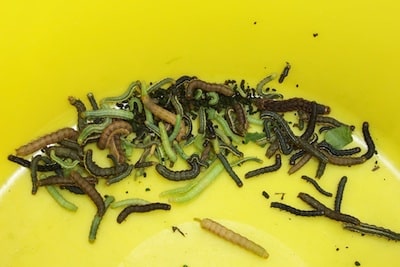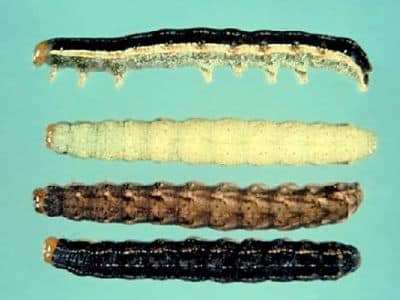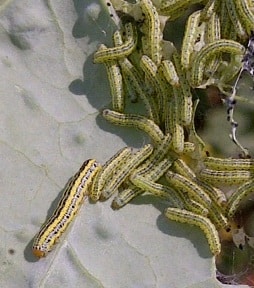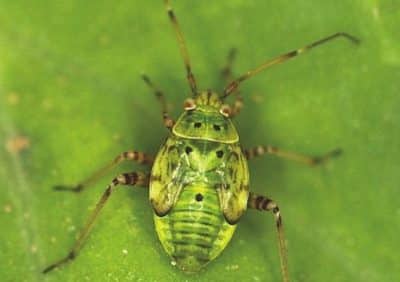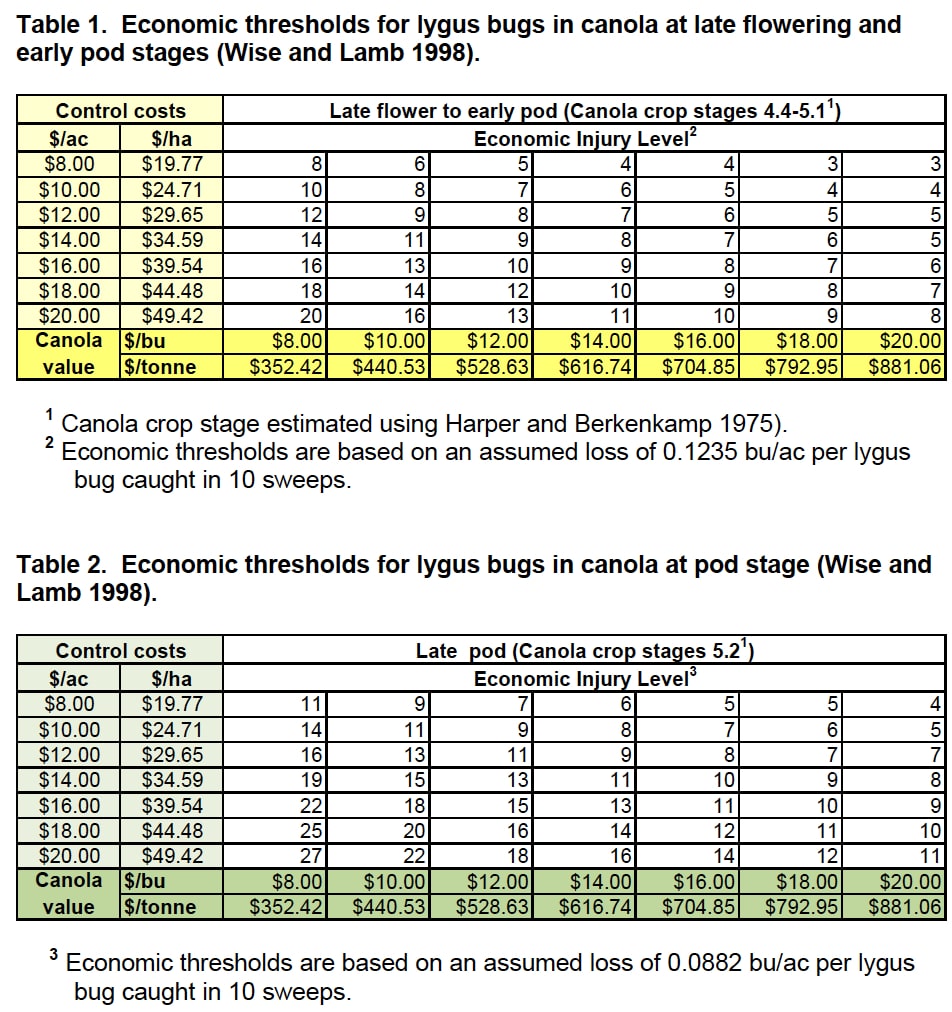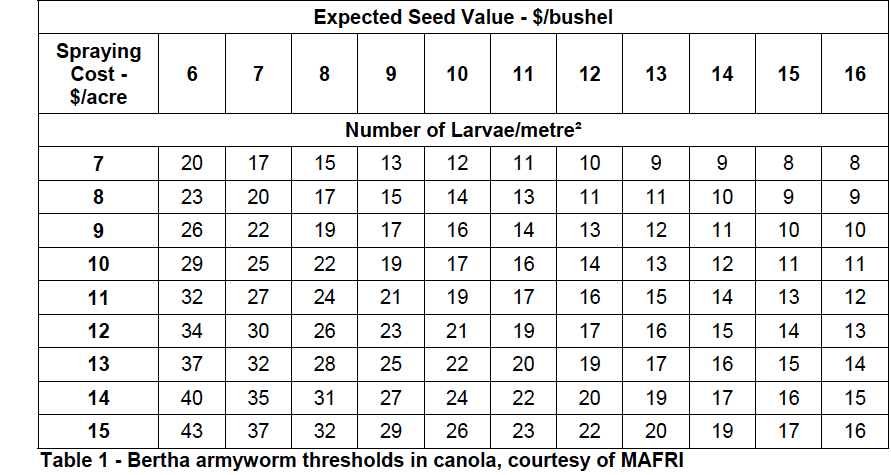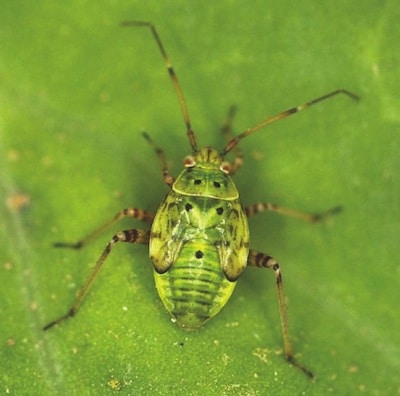
Lygus: Second generation lygus have arrived. Young nymphs will reach late instar and adult stages in 5 to 14 days. When scouting to see if lygus numbers are near thresholds, include later instars — the ones with black dots on their back (see the top photo) — as well as adults in the count. Economic thresholds outlined on the tables will be in the range of 7-10 per 10 sweeps. Click here for a comprehensive article from Alberta Agriculture.
To scout for lygus:
—Lygus thresholds are based on sweep net counts. Sample several locations in the field.
—Sweep when conditions are pleasant (e.g., sunny, low wind, above 15 C and between 10 a.m. and 6 p.m.) to ensure lygus are active within the canopy.
—Sweep using a 180° arc into the canopy and aim to sweep the buds, flowers and pods while moving forward.
Bertha armyworm: Mature larvae are green, brown or black with a light brown head and an orange stripe along each side. They are 1” to 1.5” long. (See the photos below.) The most damaging larval stages are when worms are 0.5” long and larger. Small larvae feed on the underside of leaves, but usually cause little economic damage even when population levels are high.
To scout for bertha armyworm:
—Go out in early morning or late evening when larvae are most active.
—Mark out an area a quarter-metre square (50 cm by 50 cm) and beat the plants growing within that area to dislodge the larvae.
—Count the larvae that have fallen to the ground and multiply by 4 to get the number per metre square. Larvae will hide under leaf litter and in cracks, so check closely.
—Sample at least three locations a minimum of 50 metres apart. Do not sample headlands and areas within the crop that are not representative of the field.
—Use the average number of larvae at the sites surveyed to determine if the economic threshold has been exceeded. (See below for a bertha thresholds table.)
—Scout each field. Adjacent fields may have very different larval densities, depending on how attractive the crop was when the moths were laying their eggs. Adjacent fields may also have different-sized larvae, depending on when the eggs were laid.
For best results, apply an insecticide as soon as economic thresholds are reached. A single well-timed application of any registered insecticide is usually effective. Check the product’s pre-harvest interval before applying. Apply insecticides early in the morning or late evening when the larvae are actively feeding. Do not apply during warm afternoons when larvae tend to be in the bottom of the canopy, where contact will be reduced.
Click here for more on bertha armyworm.
Zebra caterpillars: As noted last week, zebra caterpillars (see very bottom for photo) tend to be isolated to small areas within a field. Zebra caterpillars will feed on pods, but do not seem to feed as aggressively as bertha armyworm. If growers decide to spray, consider spraying only the patch.
